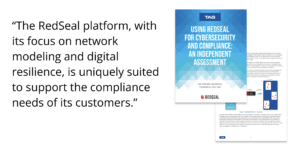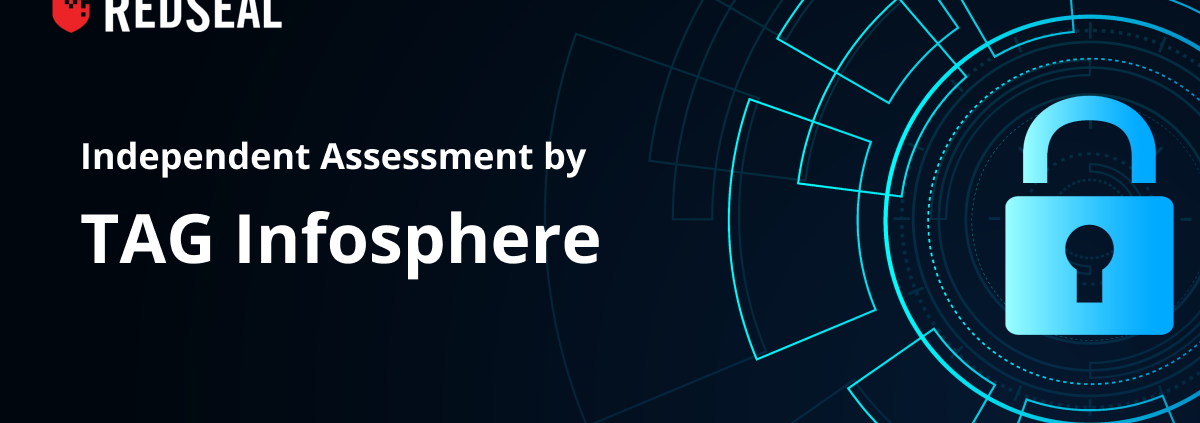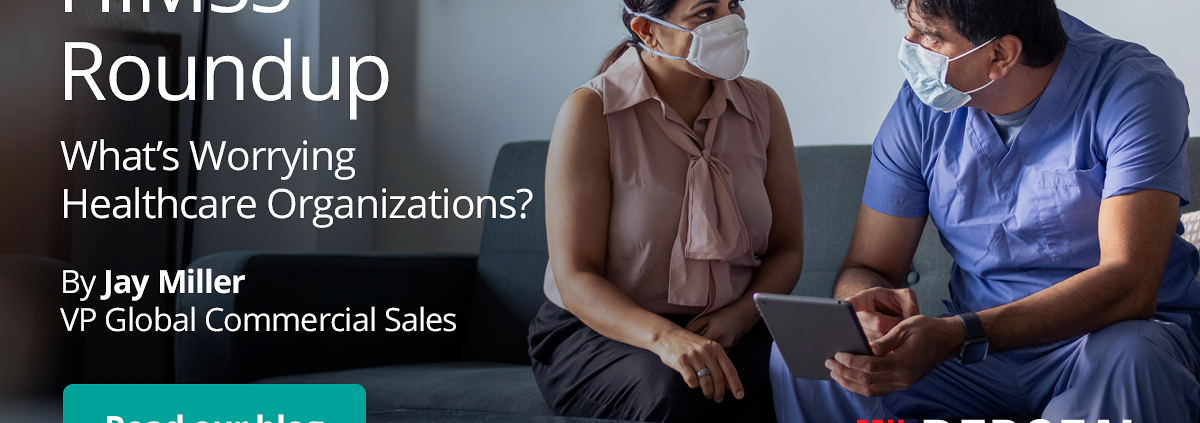Held from March 14 to 18 in Orlando, Florida, the HIMSS 22 Global Health Conference and Exhibition took aim at some of the biggest opportunities and challenges facing healthcare organizations this year.
While businesses are taking their own paths to post-pandemic operations, both the content of sessions and conversations with attendees revealed three common sources of concern: compliance operations, the Internet of Healthcare Things (IoHT), and patient access portals.
Top-of-Mind Issues in Healthcare Security
For the past few years, effective healthcare security has been inextricably tied to ransomware risk reduction and remediation. It makes sense: According to Josh Corman, head of the Cybersecurity and Infrastructure Agency (CISA) COVID-19 task force, “Hospitals’ systems were already fragile before the pandemic. Then the ransomware attacks became more varied, more aggressive, and with higher payment demands.” As a result, ransomware has become a top priority for healthcare organizations looking to protect patient data and limit operational impacts.
Conversations with healthcare and IT professionals at HIMSS 22, however, made it clear that what worries organizations is changing. To ensure effective security, responses must evolve as well.
Top Issue #1: Compliance with Evolving Government Regulations and Security Mandates
Not surprisingly, many HIMSS attendees expressed concern about evolving government regulations and security mandates.
Attendees spoke to issues around familiar mandates such as the Health Insurance Portability and Accountability Act (HIPAA), and Payment Card Industry Data Security Standards (PCI DSS)—many were worried about their ability to understand the full scope of software and services on their networks, along with the number and nature of connections across these networks. Mergers and acquisitions (M&A) were also mentioned as potential failure points for compliance. As healthcare markets begin to stabilize, M&A volumes are increasing, in turn, leading to challenges with IT systems integration that could lead to complex and cumbersome overlaps or even more worrisome gaps in security.
When it comes to security mandates, meanwhile, many organizations understand the need for improved policies and procedures to help mitigate risk but struggle to make the shift from theory to action. Consider a recent survey which found that 74 percent of US healthcare organizations still lack comprehensive software supply chain risk management policies, despite directives such as President Biden’s May 2021 executive order on improving national cybersecurity in part through the use of zero trust frameworks, multi-factor authentication policies, and software bill of materials (SBOM) implementation.
The result is a growing concern for healthcare organizations. If regular audits conducted by regulatory bodies identify non-compliance, companies could face fines or sanctions. Consider the failure of a PCI DSS audit. If it’s determined that organizations aren’t effectively safeguarding patients’ financial data, they could lose the ability to process credit cards until the problem is addressed.
Top Issue #2: The Internet of Healthcare Things (IoHT)
IoHT adoption is on the rise. These connected devices, which include everything from patient wearables to hospital beds to lights and sensors, provide a steady stream of actionable information that can help organizations make better decisions and deliver improved care. But more devices mean more potential access points for attackers, in turn putting patient data at risk.
Effectively managing the growing IoHT landscape requires isolation and segmentation—the ability to pinpoint potential device risks and take action before attackers can exploit vulnerabilities. There’s also a growing need to understand the “blast radius” associated with IoHT if attackers are able to compromise a digitally-connected device and move laterally across healthcare networks to access patient, staff, or operational information. From data held for ransom to information exfiltrated and sold to the highest bidder, IoHT networks that lack visibility significantly increase the chance of compromise.
The Internet of Healthcare Things also introduces the challenge of incident detection. As noted by HIPAA Journal, while the average time to detect a healthcare breach has been steadily falling over the past few years, it still takes organizations 132 days on average to discover they’ve been compromised.
Top Issue #3: Patient Access Portals
Patient access portals are a key component in the “next normal” of healthcare. Along with telehealth initiatives, these portals make it possible for patients to access medical information on-demand, anywhere, and anytime. They also allow medical staff to find key patient data, enter new information, and identify patterns in symptoms or behavior that could help inform a diagnosis.
But these portals also represent a growing security concern: unauthorized access. If the wrong person gains access to patient records, healthcare companies could find themselves exposed to both legal and regulatory risks. In part, this access risk stems from the overlap of legacy and cloud-based technologies. Many organizations still leverage outdated servers or on-premises systems while simultaneously adopting the cloud for new workloads. The result is a patchwork of overlapping and sometimes conflicting access policies, which can frustrate legitimate users and create avenues of compromise for attackers.
Addressing Today’s Pressing Healthcare Security Concerns
While meeting regulatory obligations, managing IoHT devices, and monitoring patient portals all come with unique security concerns, effectively managing all three starts with a common thread: visibility.
If healthcare organizations can’t see what’s happening on their network, they can’t make informed decisions when it comes to improving overall security. Consider IoHT. As the number of connected devices grows, so does the overall attack surface. With more devices on the network, attackers have more potential points of access to exploit, in turn increasing total risk. Complete visibility helps reduce this risk.
By deploying solutions that make it possible to view healthcare networks as a comprehensive, dynamic visualization, it’s possible for companies to validate network and device inventories, ensure critical resources aren’t exposed to public-facing connections, and prioritize detected vulnerabilities based on their network location and potential access risk. Additional tools can then be layered onto existing security frameworks to address specific concerns or eliminate critical vulnerabilities, in turn providing greater control over healthcare networks at scale.
The automation of key tasks—such as regular, internal IT audits—is also critical to improving healthcare security. Given the sheer number of devices and connections across healthcare networks, even experienced IT teams aren’t able to keep pace with changing conditions. Tools capable of automating alert capture and performing rudimentary analysis to determine if alerts are false positives or must be escalated for remediation can significantly reduce complexity while increasing overall security.
Handling Healthcare Worries
Peace of mind for healthcare organizations is hard to come by—and even harder to maintain. Evolving concerns around compliance, IoHT, and patient portals present new challenges that require new approaches to effectively monitor, manage and mitigate risks.
Thankfully, improving visibility offers a common starting point to help solve these security challenges. Armed with improved knowledge of network operations, healthcare companies are better equipped to pinpoint potential threats, take appropriate action, and reduce their total risk.
See what matters most: Get complete network visibility with RedSeal.





